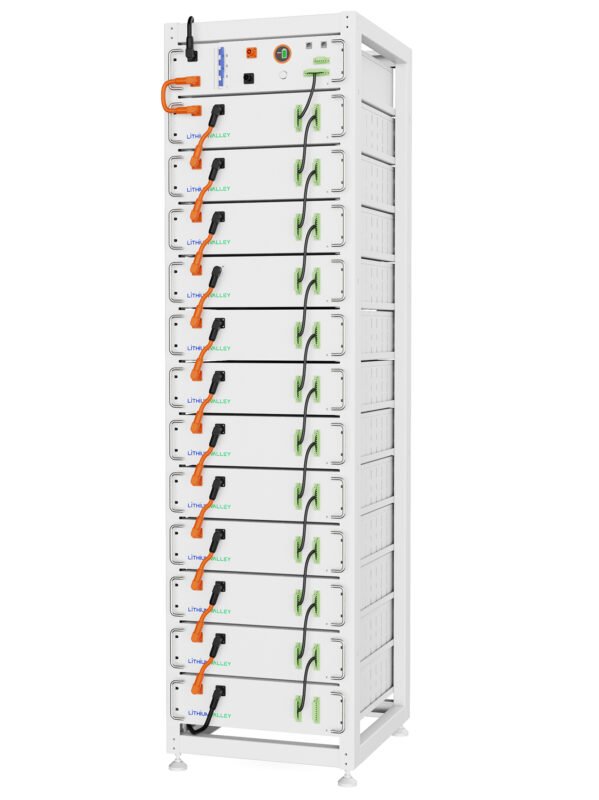What you need to know about new EU battery regulation
The EU Battery Regulation 2023/1542, approved in July 2023, is a comprehensive legal framework that aims to enhance the sustainability and safety of batteries. It replaces the previous Battery Directive 2006/66/EC and introduces new requirements in many areas of sustainability and safety for batteries and battery-operated products.
The regulation covers key sustainability areas such as design requirements, restriction of substances, carbon footprint, recycled content, performance and durability, removability and replaceability, and safety, specifically for stationary battery energy storage systems (SBESS).It also introduces new requirements for information and traceability, including labelling and CE marking, information via QR code, and a digital battery passport.
The regulation introduces major changes compared to the existing Battery Directive. For instance, it amends battery categories to include portable, industrial, automotive, electric vehicle (EV), and light means of transport (LMT) batteries. It also introduces new information and labelling requirements, such as a battery passport, labelling for chemistry, lifetime, charging capacity, collection, hazardous substances (HS), and safety risks.
From February 18, 2027, LMT, EV, and industrial batteries (greater than 2 kWh) placed on the market in the European Union will be required to be electronically registered1. The regulation also introduces a CE conformity assessment of batteries, meaning all batteries, regardless of their use, will need to carry the CE mark.
The regulation also introduces requirements for an individual electronic battery passport for each industrial battery (with a capacity of more than 2 kWh), EV battery, and LMT battery. This electronic record should include general information about the battery and the data sheet of the battery.
The regulation also introduces supply chain due diligence requirements for companies, particularly battery manufacturers and importers, who are the first to introduce batteries to the EU market. This obligation applies when the active materials within the battery include cobalt, natural graphite, lithium, or nickel.
The regulation will have a significant impact on various industries, including the automotive industry, which will need to meet stricter environmental, social, and economic requirements. It will also affect manufacturers of battery-powered medical devices and in vitro diagnostic devices, such as surgical power tools, electrocardiographs, electric stethoscopes, pacemakers, robotic cameras, insulin pumps, and glucose monitors, as well as smartwatches and other wearable medical devices.
The first obligations of the regulation will apply uniformly throughout the EU from February 18, 2024, with the remainder coming into force over the course of the next 8 years.
How does the new EU battery regulation impact battery-operated products ?
The new EU Battery Regulation, Regulation 2023/1542, introduces significant changes and requirements aimed at enhancing the sustainability and safety of batteries and battery-operated products. The regulation will replace the existing Battery Directive 2006/66/EC and will introduce requirements in many new areas of sustainability and safety of batteries and battery-operated products. The regulation will start to apply from 18 February 2024.
Design Requirements
The regulation introduces more stringent removability and replaceability requirements. Products incorporating portable batteries must be designed in a way that ensures the batteries are readily removable and replaceable by the end-user at any time during the expected lifetime of the product. By 2027, portable batteries incorporated into appliances should be removable and replaceable by the end-user.
Restriction of Substances
The regulation continues to restrict the use of mercury and cadmium in batteries and introduces a restriction for lead in portable batteries4. The regulation also gives the Commission powers to restrict further substances in the future. By 31 December 2027, the Commission will present a report identifying the substances in batteries that have a negative impact on human health, the environment, or recycling processes.
Carbon Footprint
The regulation encourages the use of low-carbon technology in battery manufacturing to support the EU’s goal of achieving climate neutrality by 2050. Manufacturers will need to declare the carbon footprint of their batteries.
Performance and Durability
The regulation introduces requirements for performance and durability. For example, ‘portable batteries of general use’ (e.g., AA batteries) must meet the electrochemical performance and durability parameters set out in the Batteries Regulation.
Recycled Content
Manufacturers will need to meet minimum percentage thresholds for recycled content in industrial, electric vehicle (EV), and certain automotive batteries.In summary, the new EU Battery Regulation introduces significant changes that will impact the design, production, and waste management of all types of batteries and battery-operated products manufactured or sold in the European Union. The new rules extend producer responsibility and require due diligence of supply chains to assess social and environmental risks.
What are the penalties for non-compliance with the new eu battery regulation ?
The new EU Battery Regulation 2023/1542 stipulates that member states must establish penalties for non-compliance with the regulation’s requirements. These penalties are to be effective, proportionate, and dissuasive. The specific provisions on penalties are to be laid down by each member state.
Non-compliance with the regulation can lead to significant risks for the relevant company. Not only will non-compliant companies be exposed to public scrutiny, but the regulation also provides that the member states shall take all appropriate measures to restrict or prohibit the batteries made available on the market by a non-compliant economic operator. Severe penalties can include exclusion from the EU market.
The regulation lays down obligations regarding battery due diligence policies for economic operators that had a net turnover of EUR 40 million or more in 2021. As of August 18, 2025, these operators will need to comply with obligations concerning raw materials and associated social and environmental categories. Infringements of these due diligence requirements will also be subject to penalties.
By mid-2025, member states will be required to lay down rules on and specific penalties for any breaches of the Batteries Regulation5. By August 18, 2025, EU Member States have to apply penalties for non-compliance with the EU Batteries Regulation.
In summary, non-compliance with the EU Battery Regulation can result in significant penalties, including financial penalties, public scrutiny, and exclusion from the EU market. The specific penalties will be determined by each member state.




























.png)
.png)
.png)
.png)






